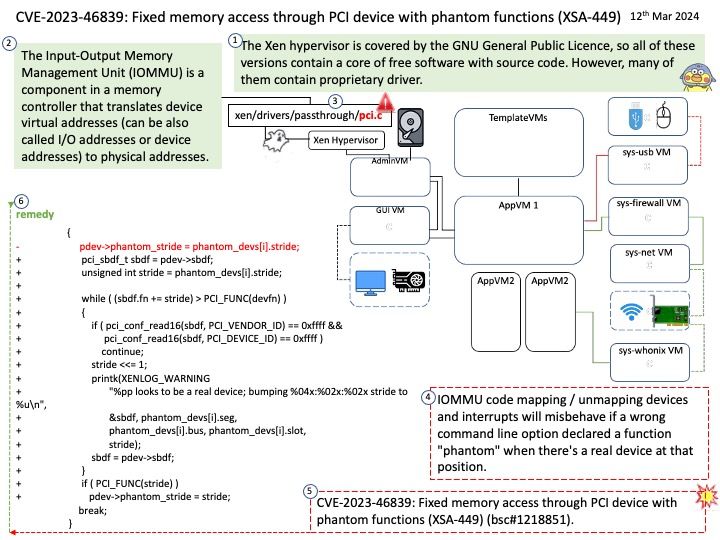
Preface: SUSE’s partnership with HPE Cray dates back to the early 1990s, pre HPE’s acquisition of Cray, and the entire time SUSE has been collaborating on Cray OS – a specialized version of SUSE Linux Enterprise Server.
Background: The hypervisor needs to manipulate the interaction between the guest OS and the associated physical device.
PCI devices can make use of a functionality called phantom functions, that when enabled allows the device to generate requests using the IDs of functions that are otherwise unpopulated. This allows a device to extend the number of outstanding requests.
Such phantom functions need an IOMMU context setup, but failure to setup the context is not fatal when the device is assigned. Not failing device assignment when such failure happens can lead to the primary device being assigned to a guest, while some of the phantom functions are assigned to a different domain.
Vulnerability details: Under certain circumstances a malicious guest assigned a PCI device with phantom functions may be able to access memory from a previous owner of the device.
CVE-2023-46839: Fixed memory access through PCI device with phantom functions (XSA-449) (bsc#1218851).
Official announcement: Please refer to the link for details – https://www.suse.com/security/cve/CVE-2023-46839.html